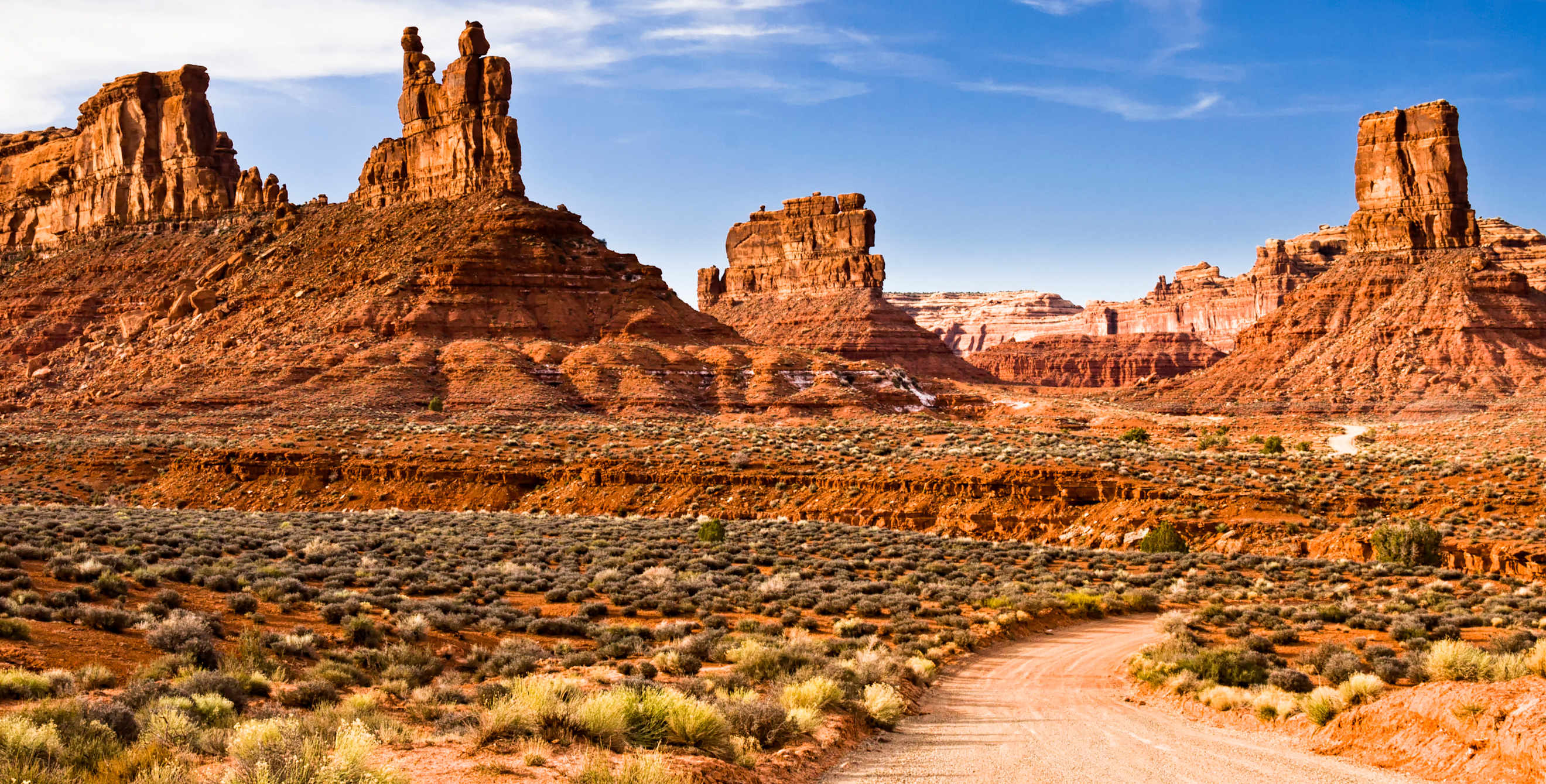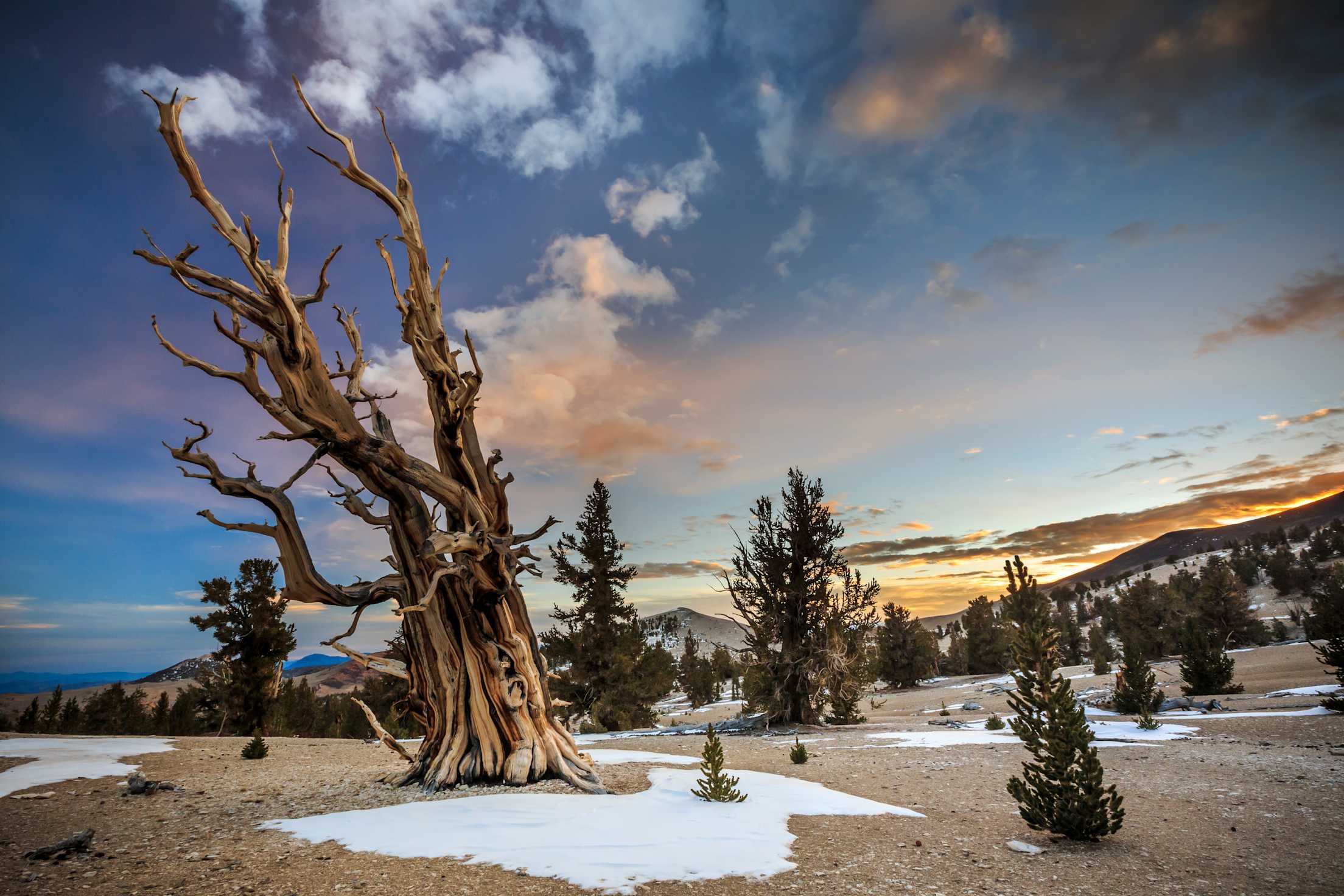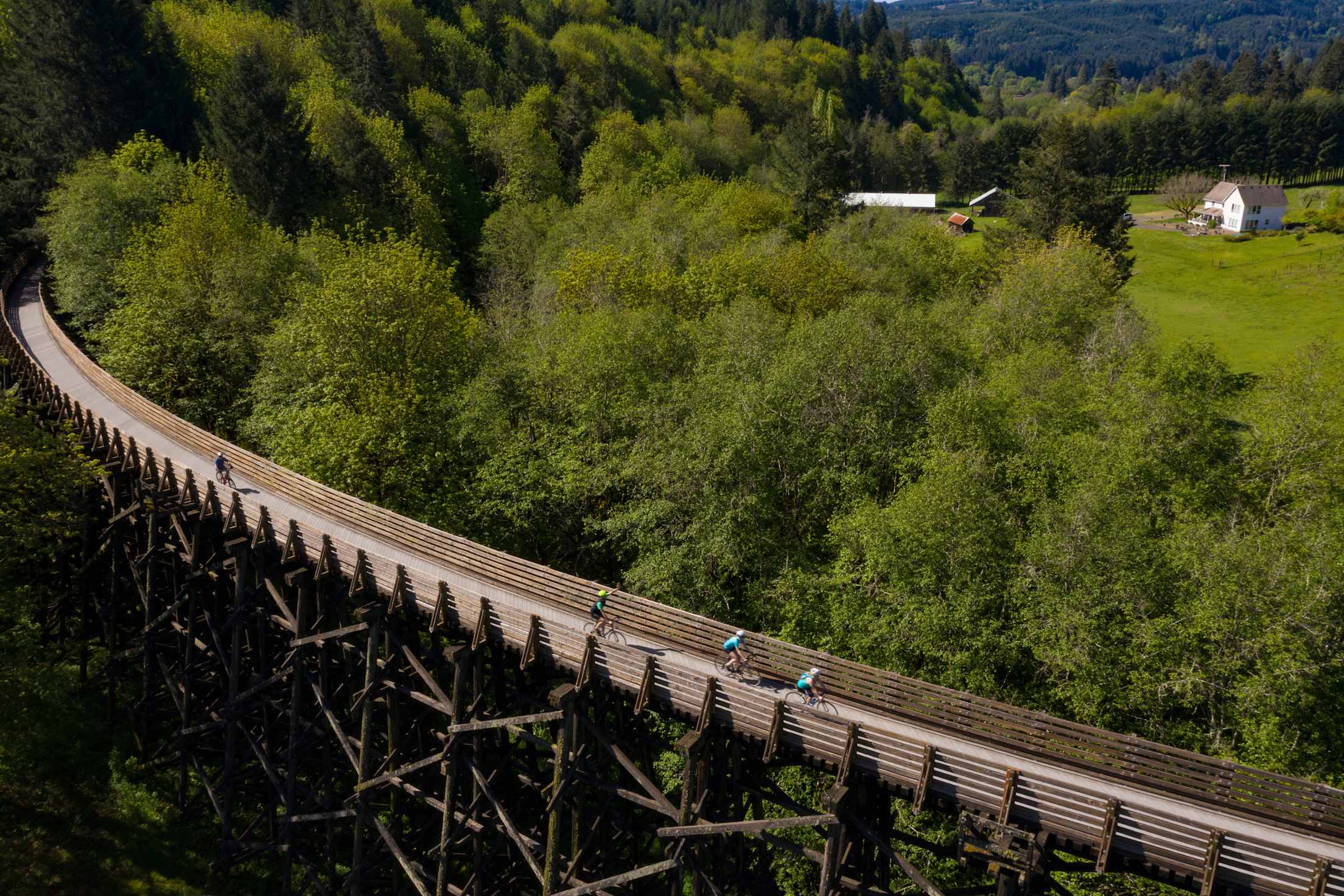
Off-the-Beaten Path Places to Visit
7 suggestions for taking the road less traveled.

This year, are you looking to travel somewhere different, somewhere you’ve never been—or, perhaps, never heard of before? If so, you’re in luck: Follow these paths, and you’ll find splendid scenery, outdoor adventures, and incredible food along the way.
San Juan River, Utah
Picture it: an otherworldly landscape of deep canyons, soaring pinnacles, and Technicolored bluffs, as far as the eye can see. The best part? You didn’t have to make a reservation, and you’ve got this glorious red rock view all to yourself. Welcome to Valley of the Gods, an under-the-radar backcountry spot in Utah’s southwest corner. The San Juan River Valley is home to just over 15,000 people—and classic southern Utah scenery. But whereas Zion and Bryce saw over 5 million visitors combined in 2020, two stunning San Juan River Valley monuments—Natural Bridges and Hovenweep—welcomed just 72,398 that same year.
The stargazing is prime at Natural Bridges, the first-ever International Dark Sky Park. Meanwhile, at Hovenweep, you can marvel at the scenery and the ingenuity of the Ancestral Puebloans, whose carefully constructed towers—built over 700 years ago—still stand today. For a closer look at indigenous life, visit Edge of the Cedars State Park, and climb into a 1,000-year-old kiva. Refuel afterward in the town of Bluff, where Twin Rocks Cafe turns out Navajo tacos, made with fry bread and topped with homemade chili and all the fixin's.
Yaak Valley, Montana
With mountains upon mountains blanketed with Douglas firs, pristine alpine meadows, and tiny roads meandering through the forests, Montana’s Yaak Valley feels like a place untouched by time. And, in many ways, it is. Cell service is practically nonexistent here, there’s nary a building in sight, and the nearest towns—Libby and Troy—are 37 and 40 miles away. But by exiting the land of reliable WiFi and entering this rural valley in northwest Montana, you’ll earn access to 180,000 wild, roadless acres dotted with old-growth forests, an area that’s home to grizzly bears, elk, pileated woodpeckers, and everything in between.
Pack your necessities (and bear spray) and explore the valley’s 1,400 miles of trails. The 1.5-mile Flatiron Mountain Trail, a ridgeline hike, delivers panoramic views of the Yaak and Kootenai areas. Or, in late spring, witness the wonder by raft, canoe, or kayak. Local guide Jim Hammons, owner of Montana River Tours & Adventure Guides, recommends floating the Kootenai River from Troy to Kootenai Vista, a 2 to 3-hour trip. This section has some rapids, followed by a mellow stretch ideal for swimming. Along the way, keep an eye out—the Kootenai attracts bald eagles, osprey, and great blue herons. You might end the day at Cabinet Mountain Brewing Company, a women-owned brewery that calls itself “Libby’s Living Room.” What to order? The Yaak Attack IPA, naturally.

Fallon, Nevada
Planted amidst miles upon miles of sagebrush, Fallon might look, to the untrained eye, like a mirage. Perhaps that’s how the town of 8,000, nestled in northern Nevada’s Lahontan Valley, got its nickname, the “Oasis of Nevada.” This area has been a popular waypoint for millennia, as evidenced by Grimes Point Archaeological Site—a field of boulders etched with petroglyphs—and Fort Churchill State Historic Park, where the ruins of an 1860s adobe fort remain, preserved in a state of arrested decay.
Thanks to its location on the banks of the Carson River, along with feats of hydro-engineering, Fallon supports numerous farms and ranches. In summer and fall, taste the local produce at century-old Lattin Farms, where B. Ann and Rick Lattin sell raspberries, corn, tomatoes, and their famous Heart of Gold cantaloupes. Meanwhile, at Frey Ranch, fifth-generation farmer Colby Frey “farms" whiskey by cultivating and harvesting grains, malting his fresh-grown barley, and then distilling and maturing the product into ground-to-glass whiskey that’s won raves from Whisky Advocate. Visit the ranch on a Saturday and you can take a free tour, then taste the rye and bourbon, plus two expressions from the ranch’s new single-grain series. Wrap up the day back in town, where, beneath the glow of the retro neon Lariat Motel sign, the Oats Park Art Center presents top-notch exhibitions and shows. It’s worth timing your visit to catch the Portland Cello Project, who will perform songs from “Purple Rain.” After all, says Valerie Serpa, the Churchill Arts Council’s executive director, “Who could not love listening to over a dozen cellos play the music of Prince?”
Superior, Arizona
Superior’s beginnings weren’t so different from many other Arizona settlements. The town—then called Queen—sprang up to supply the nearby silver town of Pinal. That mine boomed, then went bust. Copper was discovered near Superior, fortunes were made, and, eventually, that mine closed. But then, in 1924, a copper magnate gave the mountain town a gift that would become its crown jewel: Boyce Thompson Arboretum. Today, the living museum shelters 19,000 plants within 135 acres of gardens, from the Heritage Rose Garden, abloom with 19th-century roses, to the new Wallace Desert Garden, where columnar cacti reach skyward. Don’t miss the Australian Deserts Exhibit, which is home to century-old eucalyptus trees, including Mr. Big, the largest red river gum (Eucalyptus camaldulensis) in the United States.
After wandering the arboretum, head downtown, to gape at the movie-worthy grand staircase in the restored Historic Hotel Magma, and stop at Los Hermanos Restaurant & Lounge for a bite. The Tameron family has owned and operated the eatery for decades, and locals love their fresh homemade tortillas and delectable red chile burro. If you can, visit Superior during the Prickly Pear Festival (August) or the Superior Burro Run (October), where runners race alongside their donkeys.

Inyo County, California
Tucked into the eastern Sierra just south of Mono County, Bishop thinks of itself as a “small town with a big backyard.” Bishop (population: 3,785) sits near the northern border of Inyo County, a sprawling area with 6 million acres of public land that’s home to California’s highest point (Mount Whitney, 14,494 feet), lowest point (Badwater Basin, -282 feet), and oldest trees, bristlecone pines that date back to the age of the Pharaohs. Not sure where to start? Consider your options at the Great Basin Bakery, where trained biologist Robin Bolser and her team turn out sourdough bread, apple coffee cake, and East Coast–style bagels. (Pro tip: grab a chocolatey Sierra Mud Cookie for the road.)
For desert scenery, head to Death Valley National Park where, at Badwater Basin, you can stare at a seemingly endless sea of mesmerizing salt polygons as Telescope Peak towers two miles above you. For wonders of another kind, visit the Ancient Bristlecone Pine Forest in Inyo National Forest and hike the 4.5-mile Methuselah Trail, winding your way through the grove of gnarled, weather-worn trees where 4,852-year-old Methuselah lives. (You’ll want to visit the forest during the summer, and call the visitor center in advance to check road conditions.) Then relax in the pool at Keough’s Hot Springs, a purveyor of R & R since 1919. For an extra dose of fun, swing through during Mule Days (May 25–30, 2022), when watch mules and their humans compete in such events as team roping and chariot racing. The event motto? “Anything a good horse can do, a good mule can do better.”

Vernonia, Oregon
Twilight fans might recognize Vernonia—the Columbia County hamlet played Forks, Washington, in the 2008 vampire movie. The place is atmospheric: a one-stoplight town set astride the Nehalem River, surrounded by Douglas fir forests. Those forests once drew loggers, and you can see evidence of the area’s logging past everywhere, from the retired Oregon-American Lumber Company locomotive at Shay Park to the old mill pond, home to the last remaining building from the Vernonia mill. Today, the structure attracts street artists, and it’s turned into something of an evolving outdoor gallery.
Walk the mile-long path around the pond and, if you’re game for more adventure, hike or bike the rest of the 21-mile-long Banks-Vernonia State Trail, through forests of maple and ash, along 80-foot-high Buxton Trestle, and into town. Then stroll through the Mayberry-esque main drag, where you can treat yourself to art (Grey Dawn Gallery), antiques (Fox Hollow), and fine leather goods (Gretchen’s Saddlery). Even if you aren’t in the market for a saddle—or handbag or wallet—it’s worth stopping by to see the window display featuring a tiny, child-sized saddle Gretchen made her daughter, and to watch the owner at her work bench, shaping, stitching, and tooling leather.
Cloud Peak Skyway, Wyoming
You’ve heard of Highway 1, Route 66, and, perhaps, Nevada’s long, lonely Highway 50. But how about Cloud Peak Skyway? Snaking through the Bighorn National Forest in central Wyoming, the 47-mile byway traverses the Bighorn Mountains, and it’s glorious in summer and fall. Start the journey by traveling back in time at the Washakie Museum & Cultural Center in Worland (just west of the route’s official starting point, Ten Sleep). Here, you can see casts of dinosaur fossils discovered around Wyoming, plus tools used by early humans. Then, carbo-load at family-run Ten Sleep Brewing Company before hitting the road. Some 14 miles in, you’ll reach Tensleep Preserve, open to the public May to October. The preserve’s trails wind through woodlands and meadows, offering views of the surrounding canyons and mountains. In fact, the big views continue all the way along the scenic byway, until you arrive on the other side of the mountains, in the town of Buffalo.
Make a night of it at the Historic Occidental Hotel, a beautifully restored century-old inn. Walking through the lobby, beneath the glittering embossed tin ceiling, you can practically hear the walls whispering tales of all they’ve seen: spinning yarns about Buffalo Bill Cody and Calamity Jane, Butch Cassidy and the Sundance Kid, and the notorious night when two ranchers, John and Al Smith, won the ownership of the hotel in a high-stakes poker game in the saloon’s back room! Grab a seat in that same saloon, have a soda—or something stronger—and sit back and daydream.